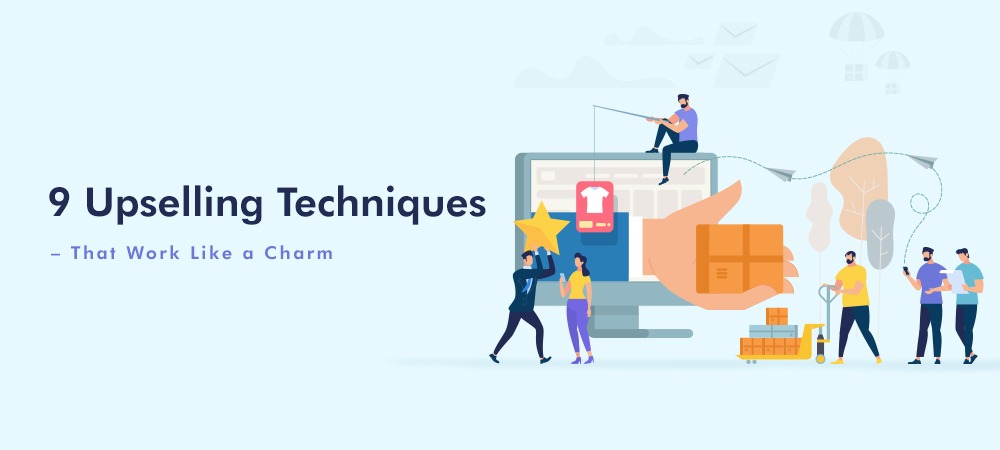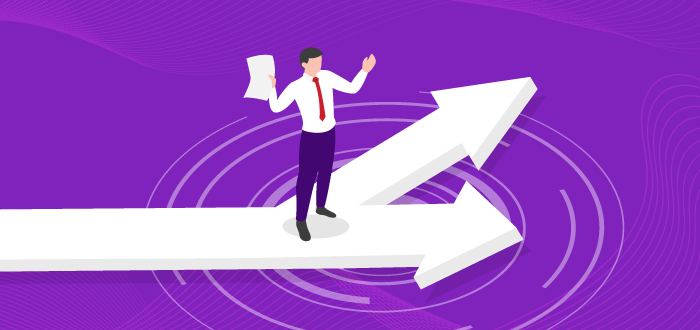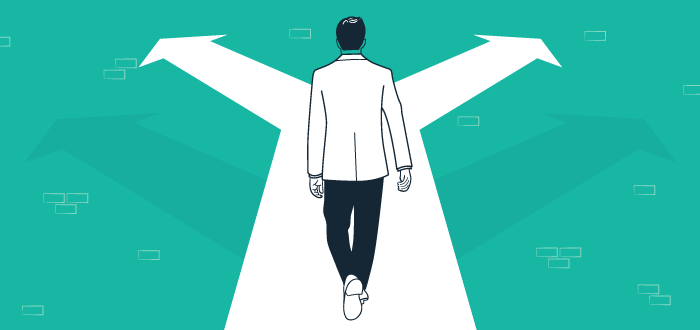Upselling is a tried and tested technique to offer your customers products or services of greater value than those they were first interested in.
- On average, upselling can increase your revenue by 10-30%
- The probability of selling to a customer is 60-70%, while a prospect is 5-20%.
- Companies that upsell drive 70-95% of their revenue from upsell and renewals.
Assuming your business makes a straight percentage on every sale, the higher priced items you sell, the better it is for your profit figures.
Interesting, isn’t it?
Through this article, we aim to make you a pro at upselling. We’ll explain what is upselling with some compelling examples, how is it different from cross-selling, how to identify upselling opportunities, and finally the tools and techniques you can use to ace upselling.
Let’s get started.
Quick links:
• What is upselling?
• Examples
• The difference between upselling and cross-selling
• How to identify upselling opportunities
• 9 Proven upselling techniques you can adopt right away
• Tools that help you upsell better
What is upselling?
Upselling is a sales technique where a seller invites the customer to consider/purchase more expensive items, upgrades, or other add-ons to generate more revenue. It usually involves marketing more profitable services or products. However, it can also be simply presenting options to the customer that they did not consider before.
Note, in upselling, it’s always the same category and style of product or service, not a complimentary product. So, if you work in a pet store, it’s not selling dog food and a dog leash together. It’s selling a bigger and better version of dog food.
Upselling examples
Upselling techniques work by satisfying the needs of the customer completely – or exceeding them. Where a single scoop of ice cream may have been on the customer’s mind, a double scoop will definitely delight them. Let’s look at some more examples.
Example of upselling in a travel business
Your business will most likely sell things that solve a problem for your customers, and to begin with, most customers will aim for the cheapest option that does what they need.
For example, if your customer is planning a trip from New York to London, they’ll book a seat on a flight, and that’s it. That seat could be in the center aisle, in between two people who occupy too much room, with the least comfortable cushion imaginable.
The upsell turns this into a first-class ticket with a recliner window seat, in-flight meal, glass of champagne, movies of their choice, and so on.
The result is the same – the customer gets on a plane in New York, flies for several hours, lands in London – but the experience is very different. The need was to travel from one place to another, and both ways ensured meeting this requirement. The latter made sure every expectation was met and exceeded.
Example of upselling in restaurants
Some restaurants offer premium variations in their menu. For example, you can opt for gluten-free or vegan variations. That’s the way restaurants upsell.
Here’s another example. Some restaurants offer two dining options – à la carte and buffet. A buffet is generally priced higher, and those opting for it can have unlimited food from the menu. So, in a way, people are paying a higher price for almost the same quantity of meal. This is another technique of upselling in restaurants.
Example of upselling in banking
You must have encountered this. A bank representative gives you good reasons to upgrade your basic, entry-level credit card to a premium one. That’s an example of upselling in banking.
By now, you must have understood what is upselling and how it works. However, because the terms upselling and cross-selling are often used together, some may find it a bit confusing. To avoid any sort of ambiguity, let’s look at the difference between upselling and cross-selling.
The difference between upselling and cross-selling
| Upselling | Cross-selling | |
| Definition | It is the process of persuading buyers to purchase more expensive items, upgrades, or other add-ons to generate more revenue. | It is the process of selling additional products or services to customers. |
| Example | Selling business class tickets to a passenger from New Jersey to Denver. | Selling meals and merchandize to a passenger from New Jersey to Denver. |
| Goal | Improve profit margin | Increase the average order value |
| Business impact | 10-30% increase in revenue | Can account for up to 35% of your revenue |
| Popular techniques | Free shipping, discounts, tiered pricing, premium versions, limited edition products at premium pricing | Add items to get free shipping, customers also bought, shop the look, bundled products, post purchase recommendation |
How to identify upselling opportunities
From the very start, use tools like opportunity management CRM that lets you understand the needs of your buyers. You must know what they want to buy from you and if there is any way you can sell them a bigger and better version in the future. Some of the signals that indicate upsell opportunities are:
- Your customer seems to be more interested in the higher version of your product and is rigorously comparing prices. In this case, either the customer is price sensitive or is just looking for a good reason to buy that upgrade.
- The customer clicked on one of your ads for an upgraded product. You can track such activities in your sales CRM and even create alerts for them.
- You know they need an upgrade, but something is holding them from doing so.
Segment such leads into a list and consistently nurture them. This way, you can plan your targets better and set a timeline to pitch them. In fact, acquiring new customers is more cumbersome than retaining old ones. Upselling to existing customers can help achieve your sales goals in a short time.
Learn how to upsell, cross-sell, and retain customers using a sales CRM software.
9 Upselling techniques you can adopt right away!
Many businesses must be already using upselling techniques. Perhaps you provide a silver and gold service – you’re already doing it.
But if not, start looking at the products or services you sell and see how you can change it up. You might find that you need to go the other way, as what you have is already the gold package. Design a silver package to sell with the least resistance, and then upsell to the gold, as it may be easier than selling the gold from the very beginning.
Your upselling strategies should encompass solving the problem that your customer has. As the better you can solve their problems, the more likely they are to buy from you.
Now, let us take a look at some upsell techniques you can use for your business.
1. Pitch a relevant upsell
You need to understand the type of upselling your customer would appreciate instead of just pushing any old upgrade at them.
Many people make a mistake here. For instance, if a customer is looking to buy apples, try selling them sweeter and better-quality apples instead of convincing them to buy oranges.
2. Provide consistent value
Most businesses assume that their job is over when they have closed a sale. They think they only need to worry about that particular customer again when it’s time for a renewal or a possible upgrade.
It is wrong to assume that the customer will be ready to upgrade as soon as you ask them. The fact is – you need to nurture them, even after the sale.
Send them newsletters giving them news about your company. It could contain product updates, events you are hosting, or even discounts that you have going. At the very least, a simple phone call once in a while can go a long way.
3. Help. Don’t sell.
Always look to add value to the customer. Don’t just say – “buy a pro plan because it is better.” Instead, tell them how it is better for them. That is, take a consultative approach.
For example, say a person is struggling to meet his health goals. He is currently using your app to track his meals and daily steps. However, you also have a higher plan to give him a customized meal plan and monitor his progress. So, you have to tell him how this plan can help him meet his goals and make his lifestyle healthier.
4. Price correctly, offer a discount
Add-ons should typically be priced at less than 50% of the core offering.
If your customers do not buy a product because it is expensive, try giving them coupon codes or a one-time discount. Monetary incentives always work.
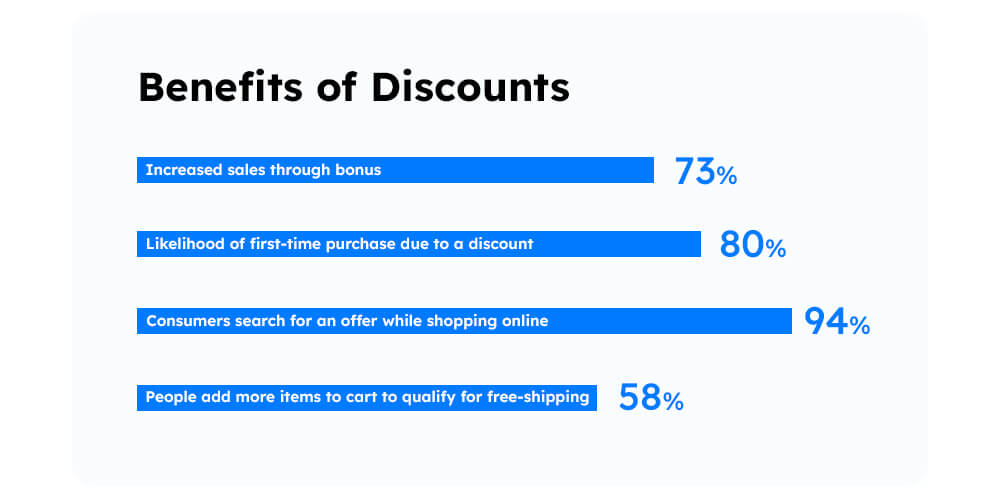
However, that doesn’t mean you have to give your product for free. Determine a reasonable discount or club it together with another related service (for example, free shipping) to make it more appealing.
5. Create a feeling of urgency
Give your customers a time-bound offer. Tell them why availing it in this particular period could be beneficial. Remember to price them wisely and know which products are more likely to get them to purchase.
For example, say you sell an online music subscription with a free and paid version. You can offer a quick ‘Christmas offer’ where the prices are slashed only for a limited time. It may entice them to subscribe.
6. Before upselling, check if your customers are happy with your product or service
A happy customer equates to a flourishing business!
But no matter how hard you try, there will be times when the customer is not so happy with you. Look out for such signs and try to resolve them quickly.
Imagine being unhappy with a product or service, and instead of fixing it, they ask you to pay more for a higher version. In all likelihood, you would stop buying, or you may even spread negative word of mouth.
7. Convince them with real-life examples
Show them how people who have used the upgraded version could solve problems (similar to what your prospect is facing currently). Most of your leads would not take your words seriously. It’s your business, of course, you have only good things to say.
Instead, display the opinions of their peers who are also buying and using the same product/service as them. It will convince them better than anything you have to say.
8. Follow-up constantly
Remember that upselling is still selling. So, don’t let your customer go with just one small sales pitch. Keep nurturing and following up with them to push them into that upgrade.
9. Bonus – How to upsell online
With the rise of e-commerce, face-to-face interactions have reduced. It may look like opportunities to upsell have also been reduced. But, in fact, with online sales, upselling has become easier. It allows you to upsell more subtly than in-person upselling, which looks pushy sometimes.
Here are some proven ways to upsell online.
#1 Offer customization
Let’s take the example of Deliveroo, a British online food delivery company.
During checkout, they give customers options to customize their orders. Certainly, a great way to upsell.
The learning from this is—offering customers options to upgrade when they’re already in the mood to buy can help increase your profit margins.
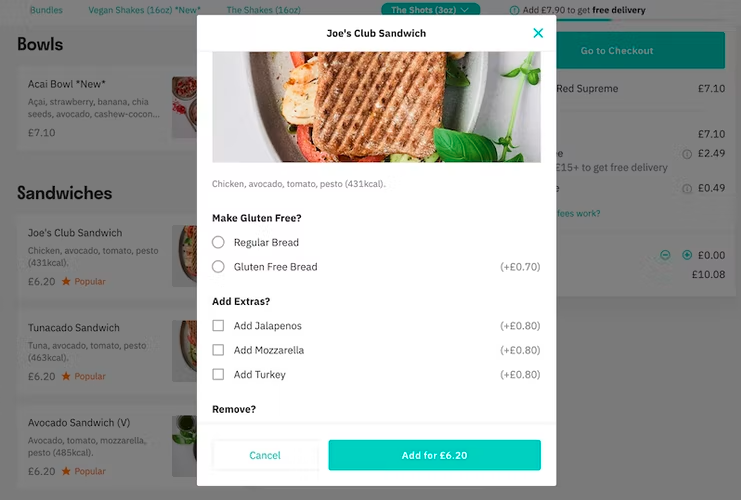
#2 Show pricing and additional features in the higher plan side by side
To understand this, let’s take the example of Typeform. They show what you get in different tiers. Customers, who have specific needs, can opt for the higher plan because they’re now well aware of the limitations of the lower plans.
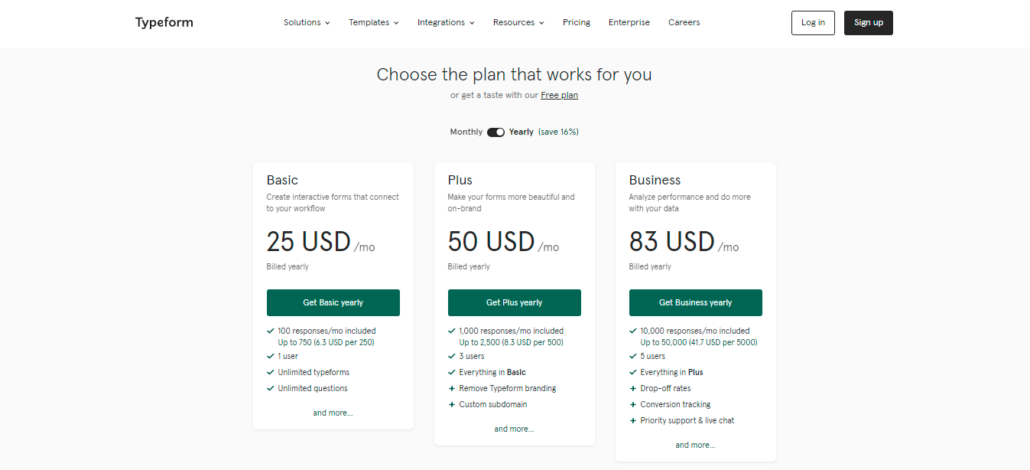
#3 Show bigger discount % on premium products.
Let’s say, your favorite brand offers a 60% discount on item A and 40% on item B. What will you choose?
Well, most likely, the product with a bigger discount percentage. Even if item A is priced higher than item B, most people will find the former more lucrative because of the higher discount value.
So, you can offer big discounts on your premium items. You can also apply this technique with a limited period offer to create a sense of urgency.
#4 Allow easy upgrade (even after the payment has been made)
You’ll usually find this type of upselling in travel and hotel bookings. They allow travelers to easily upgrade their booking to a sea-facing suite, early check-in, etc.
The idea is to reduce the friction if anyone wants to upgrade.
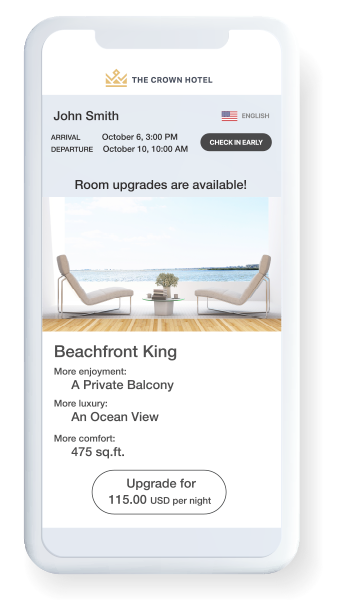
Can you sell anything with the above upselling techniques?
Within reason, yes. The product you are upselling must match the original in the way it provides a solution to the customer’s problem, and the price increase must not be too much as to act as a deterrent if the improvement is not that great.
Let us take an example.
If you work in an industry selling car tires, your price for a set of 4 standard tires is $100. The upgraded version offers twice the grip and so is twice as safe, and therefore costs twice as much – $200.
Many customers will go for it, based on the perceived benefit – it is twice as safe. Others won’t because it is a drastic price increase. However, had the price for the better version been $150, more customers would have chosen the second option.
However, don’t forget that you can upsell the upsell. Maybe you have three levels of tires – the original at $100, the improved version (better grip in wet weather) at $150, and the double grip version at $200. You will probably sell more of the $150 and $200 tires in this situation.
Upselling tools
You will find a range of tools that support the sales process in some or the other way. But when it comes to upselling, you need to find tools that complement your upselling techniques.
For example, if you’re an e-commerce brand, tools that support the sales of your premium products are helpful. Similarly, in B2B, tools that alert salespeople, whenever there’s an activity in their account or lead, are very helpful.
Let’s look at some tools that support the upselling process.
- LeadSquared Opportunity management CRM to spot upsell opportunities based on direct inquiry, ad interactions, referral sources, and more and send relevant communications automatically.
- If you’re an e-commerce brand, you’ll need tools to provide custom product recommendations. Adobe Commerce is great for this.
- Again, for upselling online, you may want to test customer engagement, conversions, etc. A/B testing tools such as VWO are of great help.
- To create discounted upsell and cross-sell products such as buy X get Y, percentage, and fixed amount, frequently bought together, you can find local apps in the Shopify app store or other platforms you use.
- You’ll also find software that makes it easy to upgrade your booking. For example, ROOMDEX automates the hotel upselling process.
- Finally, you’ll need tools to measure revenue through upsells. Generally, your CRM should or the e-commerce platform you use provides that data.
FAQs
How do you measure upselling?
You can use CRM software to measure revenue generated through normal sales and upsells.
How much does upselling increase sales?
Upselling can increase sales by 10-30%.
Is upselling a KPI?
Yes, upselling is a sales KPI that impact sales growth, pipeline value, and targets.
What is a good upsell percentage?
It completely depends on the levels of product variations you offer and your target segment. However, companies that do it right can drive up to 70-95% of their revenue through upselling.
Is upselling the same as cross-selling?
Upselling is the process of persuading buyers to purchase more expensive items, upgrades, or other add-ons to generate more revenue. On the other hand, cross-selling encourages buyers to buy additional products. You can continue with this article to learn more about upselling and go through this article for a better understanding of cross-selling.
What is down selling?
Down-selling is a sales technique where a seller offers a more budget-friendly alternative to the product or service initially considered by the customer. It is used when customers show budget constraints or refuse to make a purchase altogether.
Are upselling techniques ethical?
Yes, they are. It should never be your intent to deceive your customer or sell a product that doesn’t do what it claims to do. If you are satisfied being transparent with your customers and that your products and services are as good as they claim to be, there is no issue with offering upsells.
An upsell should always be better than or outperform the original goods or services. Otherwise, there will be no incentive for your customer to choose the upgraded option. If your customer can afford the cost and wants the best solution, they will choose the upsold items. Otherwise, they won’t.





